Ardbeg
The Ardbeg distillery was officially founded in 1815 by John McDougall. But Whisky was distilled long before that. There are no documentations, as Ardbeg was an illegal business back in 1794.
| Information about the Distillery | |
|---|---|
| Scotland, Islay | |
| -6.108113 55.640852 | |
| Active | |
| LVMH | |
|
2 x 18,000 l
Normal
|
|
|
2 x 17,000 l
Normal
|
|
|
6 x 28,000 l
|
|
| 4 t | |
| 1815 | |
| 2,000,000 l | |
| http://www.ardbeg.com |
| Average tasting notes Tasting notes |
Calculated from 3,661
i
|
|
|---|---|---|
|
Nosing
Peat Smoke:
Sweet:
Maritime Notes:
Seaweed:
Fruit:
Sherry:
Spices:
Bonfire Smoke:
Herb:
Zitrus:
Vanilla:
Herbs:
Oak:
Ham:
Caramel:
Medicinal Smoke:
Malt:
Salt:
Leather:
Heather:
Chocolate:
Alcohol:
Pepper:
Nuts:
Lemon:
Coffee:
Iodine:
Dark Chocolate:
Honey:
Tobacco:
Floral:
Anis:
Tropical Fruit:
Mint:
Orange:
Oil:
Pear:
Dried Fruit:
Raisin:
Berries:
Lime:
Date:
Grass:
Cinnamon:
Chili:
Lemon Peel:
Apple:
Barley:
Pineapple:
Ginger:
Banana:
Cherry:
Hay:
Grape:
Cake:
Green Apple:
Peach:
Nutmeg:
Almonds:
Plum:
Blackberry:
Clove:
Wheat:
Grapefruit:
Black Currant:
Strawberry:
Fig:
Hazelnut:
Melon:
Walnut:
Red Currant:
Coconut:
Rye:
Tasting
Peat Smoke:
Sweet:
Spices:
Maritime Notes:
Seaweed:
Sherry:
Fruit:
Oak:
Bonfire Smoke:
Herb:
Zitrus:
Malt:
Pepper:
Chocolate:
Salt:
Nuts:
Ham:
Medicinal Smoke:
Vanilla:
Herbs:
Caramel:
Oil:
Dark Chocolate:
Coffee:
Honey:
Alcohol:
Heather:
Chili:
Anis:
Lemon:
Leather:
Dried Fruit:
Iodine:
Tobacco:
Clove:
Orange:
Lime:
Berries:
Raisin:
Date:
Pear:
Nutmeg:
Lemon Peel:
Ginger:
Pineapple:
Barley:
Banana:
Mint:
Floral:
Almonds:
Peach:
Apple:
Grass:
Cinnamon:
Fig:
Plum:
Hazelnut:
Grape:
Blackberry:
Tropical Fruit:
Cake:
Grapefruit:
Cherry:
Wheat:
Hay:
Black Currant:
Walnut:
Strawberry:
Green Apple:
Melon:
Red Currant:
Coconut:
Finish
Peat Smoke:
Sweet:
Spices:
Oak:
Maritime Notes:
Herb:
Malt:
Seaweed:
Sherry:
Pepper:
Bonfire Smoke:
Fruit:
Salt:
Dark Chocolate:
Zitrus:
Caramel:
Coffee:
Medicinal Smoke:
Herbs:
Nuts:
Chocolate:
Ham:
Leather:
Tobacco:
Vanilla:
Chili:
Heather:
Alcohol:
Oil:
Anis:
Lemon:
Honey:
Iodine:
Clove:
Dried Fruit:
Ginger:
Almonds:
Mint:
Lemon Peel:
Nutmeg:
Barley:
Raisin:
Blackberry:
Berries:
Cake:
Floral:
Orange:
Pear:
Cinnamon:
Banana:
Date:
Tropical Fruit:
Lime:
Plum:
Apple:
Pineapple:
Grass:
Cherry:
Hazelnut:
Hay:
Green Apple:
Fig:
Coconut:
Peach:
Walnut:
Grape:
Wheat:
Grapefruit:
Kiwi:
Strawberry:
|
||
Der Whisky
The Whiskies of Ardbeg are usually heavily peated Malts. Compared to other Islay Malts Ardbeg doesn’t focus on the sea and salt tastes. They rather focus on aromas of spices, malt or sweet tones like vanilla and chocolate.
The core range of Ardbeg consists of the Ardbeg TEN, Uigeadail and Corryvreckan. The TEN is named after its age. Uigeadail was named after the Loch Uigeadail a lake. The Corryvreckan is a famous sea vortex between the Isle of Jura and the Isle of Scarba. A new addition to the standard bottlings is the Ardbeg Wee Beastie, which is a fairly young bottling with an age statement of five years.
Recently the Ardbeg distillery brought out quite a number of special releases with no age statement (Supernova, Ardbog, Alligator). These bottles are highly advertised, quite special in taste and very limited to in quantity.
The Production
The production volume of around 1,000,000 litres per year was quite large for a two pot still distillery that only produces Single Malt Whisky.
In 2021 Ardbeg presented the new still house with now two wash and two spirit stills. The production capacity can now be up to 2.8 million litres of alcohol per year. The old distillery was shut down and is no longer in operation. The new stills, like the old ones, are from Forsyths and have exactly the same dimensions and apparatus as in the old still house.
Ardbeg doesn't supply its spirit to the Blended Whisky industry, but sometimes a few barrels reach the independent bottlers so there are quite a number of independent bottles on the market.
The Isle of Islay is an island with quite a lot of water sources, so the Ardbeg distillery can get its water sources from two main water sources: the Loch Airigh Nam Beist and the Loch Uigeadail.
The Pot Stills
Ardbeg distils its Whisky twice. All stills have quite a tall neck and are constricted just above the conical neck of the pot still. The lyne arm is also rising after the bend. All these factors result in a stable distillation with a lot of reflux, which filters out the sharp and alcoholic tones that you taste in cheap spirits.
The still house of Ardbeg was so small that the condensers of Ardbeg were on the outside of the building. This means the Ardbeg distillery had less building to maintain, but the copper surroundings of the condensers were subjected to a lot of corrosion and had to be replaced quite often. The spirit safe of Ardbeg is one of the smallest there is in the business. It just has the minimum you need to separate the middle cut. Moreover, the spirit safe is mounted on the spirit receiver in order to save space.
In 2021 the new still house was finally opened. With now four pot stills. The two wash stills has a capacity of about 18,000 litres and the two spirit stills of about 17,000 litres. The primary goal of the expansion was to retain the very distinctive character of the peaty distillate. For this reason, the new stills were reconstructed exactly according to the templates of the existing stills down to the smallest millimeter, and every screw and rivet was placed in the same place.
The wash still is filled with approx. 11,750 litres, which corresponds to exactly half a washback. For this, the wash still runs twice, while the spirit still, filled with about 13,500 litres, has a slower run.
Ardbeg also has a purifier in the Lyne Arm, through which the alcohol vapours are returned to the pot. This again takes out the heavy stuff and contributes to the desired distillery character, along with the shape of the stills and the early intersections of the foreshots and feints. That character is fresh at Ardbeg with grassy notes, menthol and a lot of smoke.
The Malting
The malting was done at the Ardbeg distillery until the beginning of the 1980s. Up until then Ardbeg malted the barley on their own malting floors and dried it with their own kiln and cut peat in the marsh above the distillery.
Today Ardbeg buys their malt from the Port Ellen maltings with a high peat smoke content. The usual phenol content of the barley is said to average around 55 ppm. The malting floors can still be visited, and Ardbeg sometimes does tours to cut peat in the Islay moors with special guests
The grain is ground in batches of five tons in an old mill, the "Bobby Mill" from 1921. In the past, it was still operated with water. It still works perfectly after 100 years.
Mashing
The distillery's mash tun looks like the old cast iron one. But in fact, only the 1961 casing remains and it is a modern stainless steel semi lauter tun from 1999. Ardbeg has also invested in a new cleaning system for the mash tun. Now no one has to climb inside to clean it. The modern system cleans itself, with better efficiency, consistent quality and better mechanics. Despite the increase in production, nothing has had to be changed on the mash tun so far.
Fermentation
The six original washbacks are still in use at Ardbeg. In the course of increasing production, four new identical washbacks made of Douglas fir were installed in the old malt store. In addition, two experimental washbacks were installed in another building. As a result, fermentation is spread over three different buildings.
The washbacks can be filled with 23,500 litres of volume. The distillery ferments for about 66 to 71 hours. Half a washback fills a still, the rest ferments a little longer until the next still is filled. The result is a creamy and fruity beer with a lot of texture.
The Warehouse
Ardbeg has a lot of warehouses on Islay, the most famous one is the number 2 warehouse as it has never been painted white like all the other buildings. Ardbeg usually uses Bourbon casks, but occasionally you get some Sherry casks to sweeten up some of their bottlings such as the Uigedail (10% sherry casks) or the famous Lord of the Isles.
The weather on the Isle of Islay is quite constant due to the Gulf Stream. The lowest being about 4°C (39°F) in January and the highest about 14°C (57°F) in July. This results in a very slow maturation and less angels' share.
Due to the now higher production capacity, the distillery bottles four times a week. The selection of casks ranges from first- and second-fill to Oloroso, Madeira and a whole lot of Wine casks. And as you know from Ardbeg, there is always experimentation. However, the distillery's focus is not on cask finishes.
There is a special feature in the Ardbeg An Oa. Here, a marrying vat is used, which is similar in size to a washback. Different casks are filled into this vat and blended until the recipe is as desired.
The History
The Ardbeg distillery was officially founded in 1815 by John McDougall. But Whisky was distilled there long before that. There are no documentations, as Ardbeg was an illegal business back in 1794. So McDougall probably didn't build the Ardbeg distillery himself but bought it from the former owners and opened it officially under his name. The name Ardbeg comes from the Gaelic word 'ad bheag' for small hill.
In the early years the sales of Ardbeg were high and in 1835 they even had to raise production to meet the high demand. In 1838 the distillery became insolvent and was bought by a spirits dealer from Glasgow named Thomas Buchanan. He now owned the distillery, but it was still run by the McDougall family. After the death of Alexander, the son of John McDougall, the first women in history became distillery managers. They were Alexander's two sisters Margaret and Flora. They now managed the distillery together with Colin Hay. In 1853 Colin Hay became the owner of the distillery and ran the business with his son, who later followed his footsteps. In 1922 the distillery was bought by the McDougall family again. After a few managers at Ardbeg the distillery finally went bankrupt in 1932 and was closed during the depression. After the depression the distillery was run by the McDougall family until 1959, when the Ardbeg Distillery Ltd. was founded. After a takeover in the 70s by Allied Distillers the distillery was closed from 1981 until 1989. The reopening began slowlyas the distillery only distilled Whisky for two month a year under the flag of Allied Distillers Ltd.
Finally in 1997 the Glenmorangie Plc. bought Ardbeg and reopened the distillery for good. The brand was launched with a new design. This is the design we currently see. In 1998 the distillery got its own visitor centre and cafe, the Old Kiln Cafe. They are both on site and in the typical Ardbeg design. In 2004 the Moet Hennessy company acquires Glenmorangie and therefore Ardbeg belongs to Moet Hennessy now.
The Visitor Centre
The Ardbeg visitor centre is open all year and during the summer you can even visit the distillery on weekends. There are three different tours, on which you can experience Ardbeg's history. The top level tour even lets you take part in the production process and includes a cask tasting in the warehouse.
You can even book a night at the Seaview Cottages right next to the distillery buildings.
The Ardbeg Distillery
Port Ellen
Isle of Islay
Argyll PA42 7EA
Tel: +44 1496-302244
Email: distillery@ardbeg.com

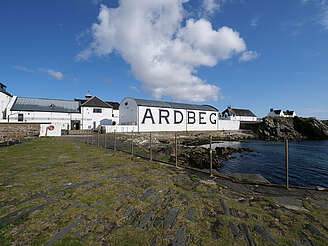
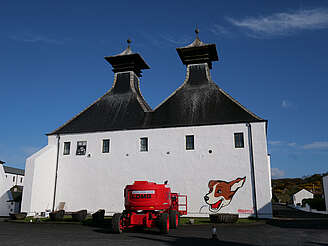
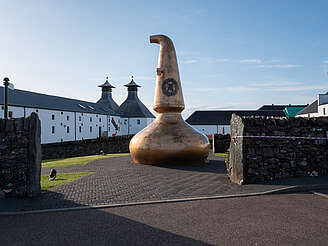
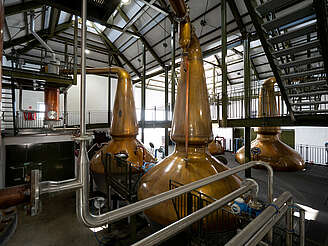
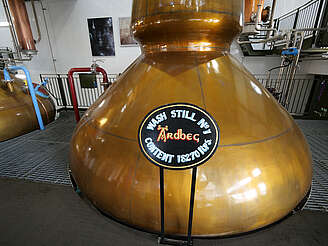
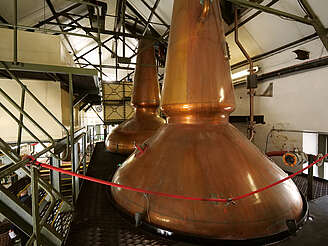
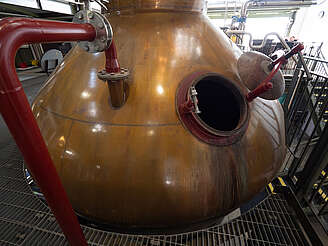
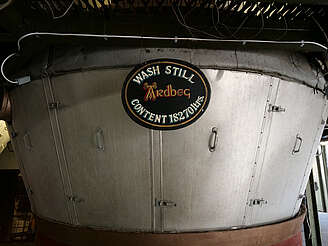
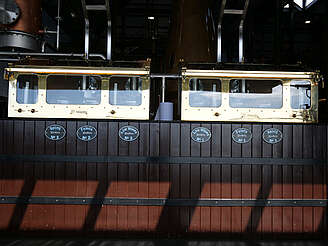
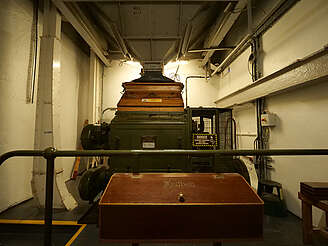
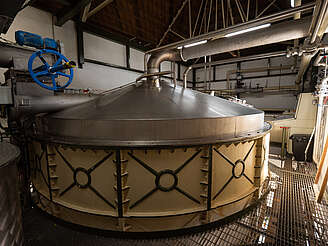
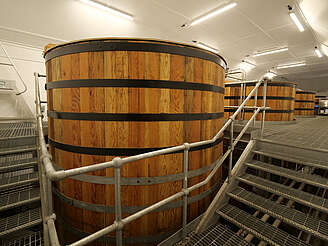
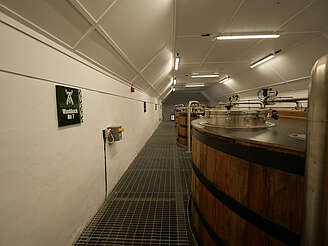
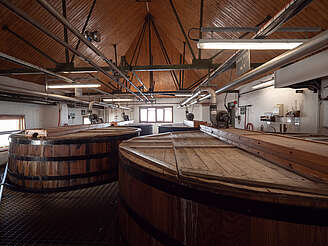
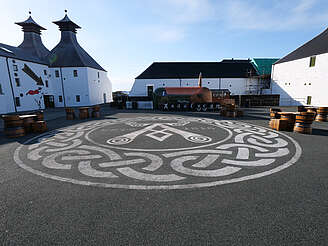
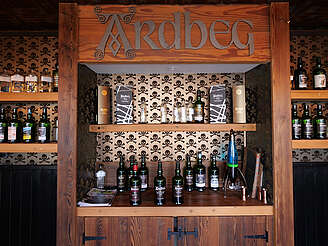
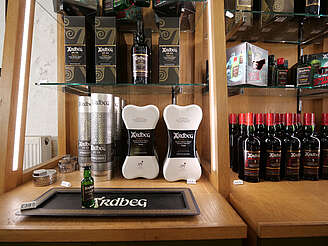
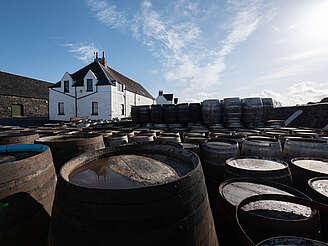
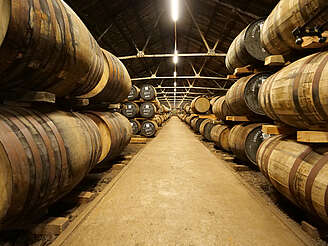
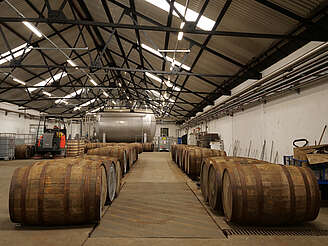
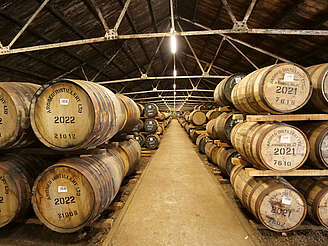
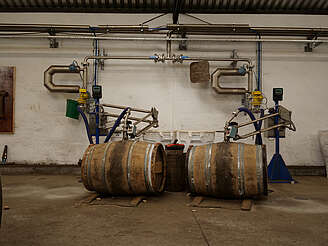
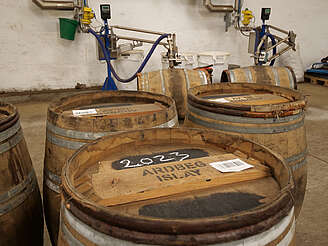
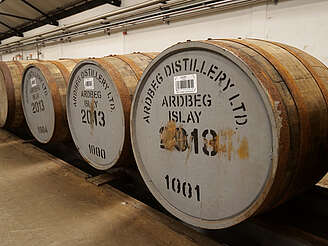
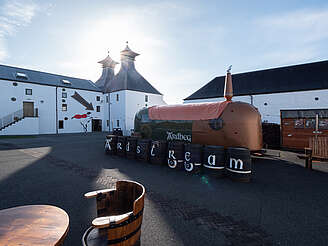
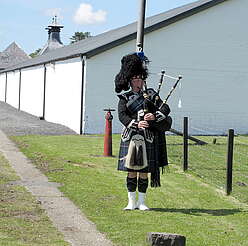
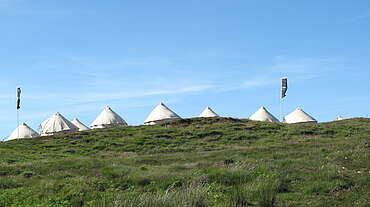
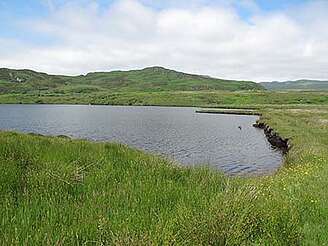
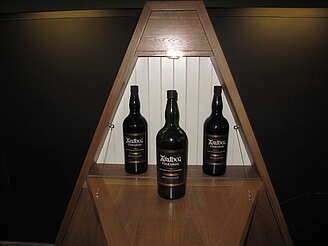
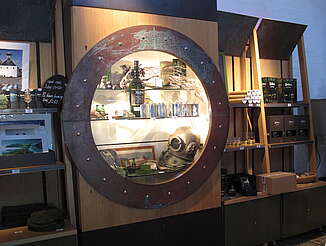
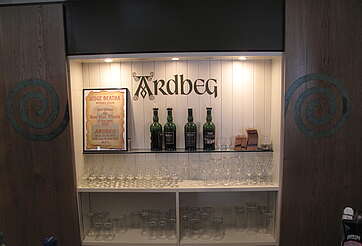
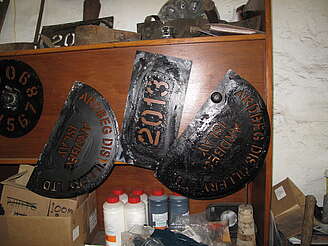
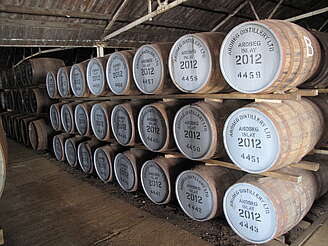
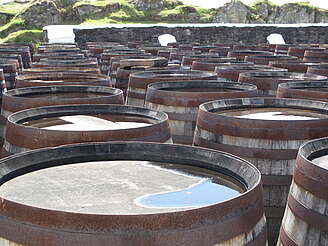
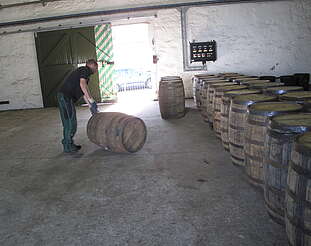
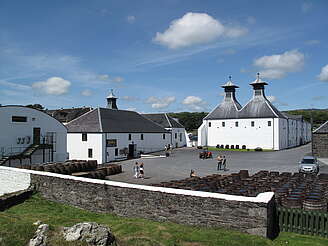
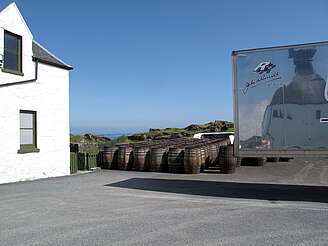
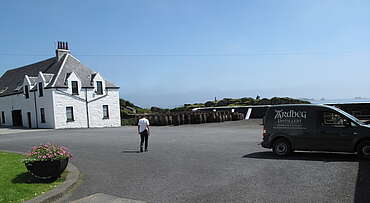
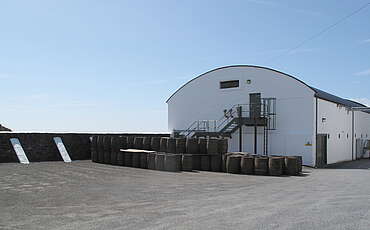
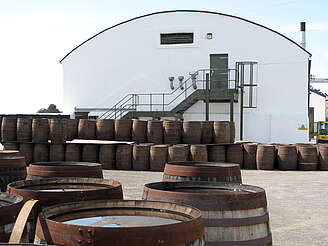
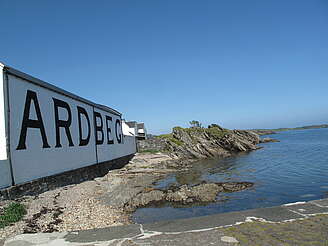
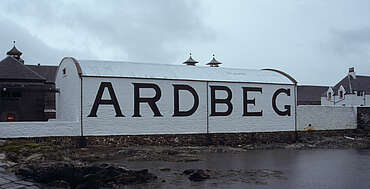
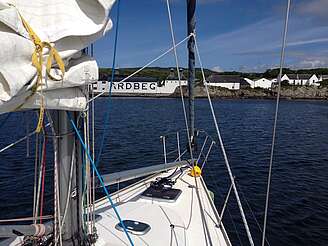
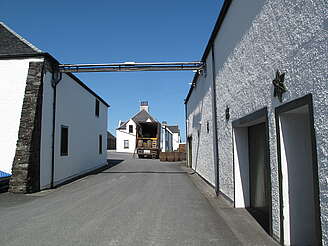
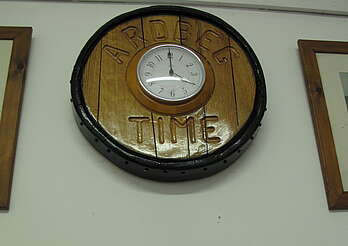
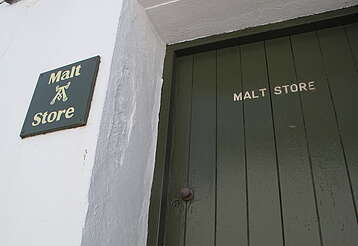
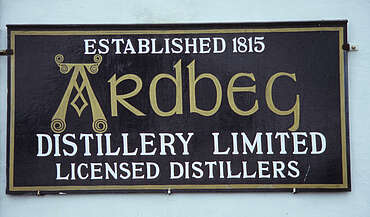
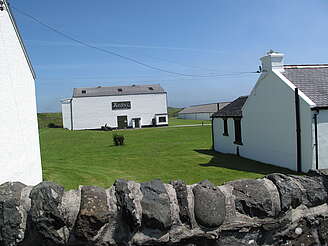
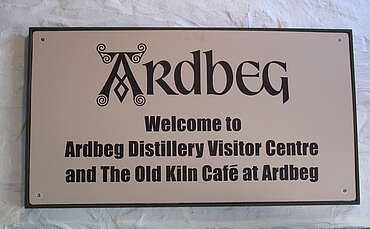
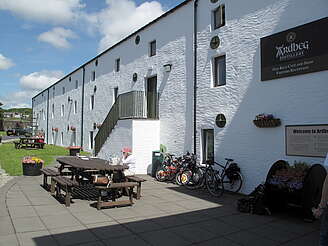
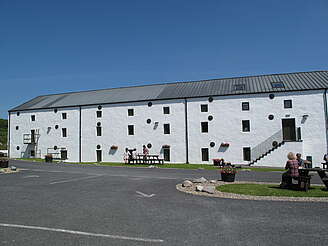
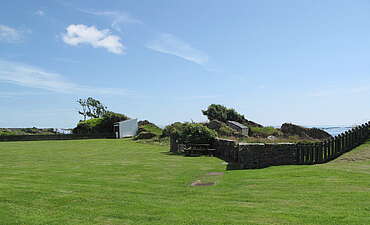
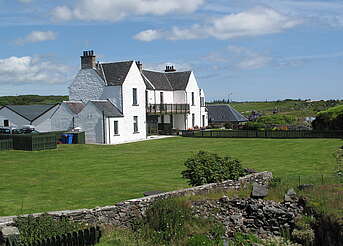
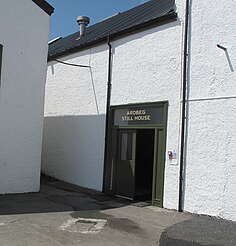
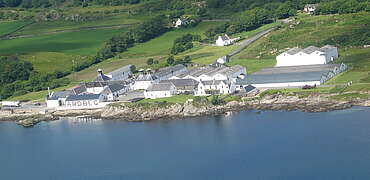
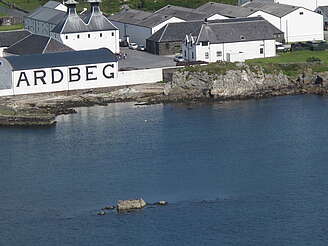
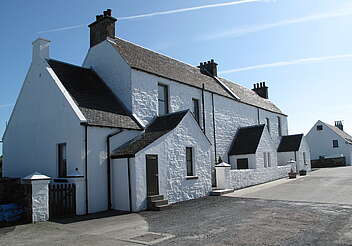
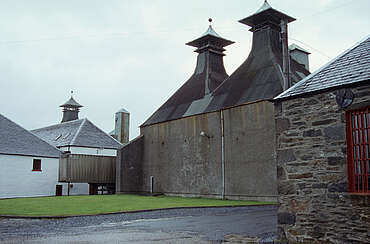
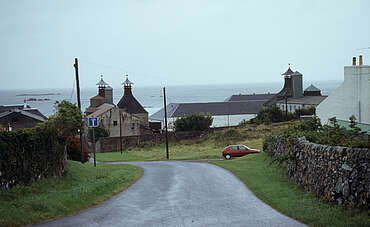
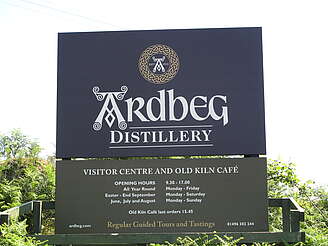
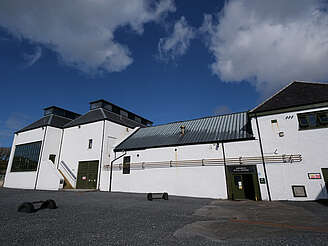
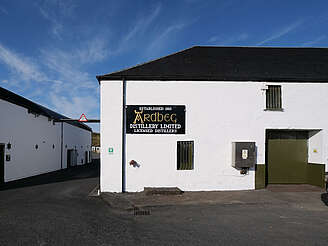
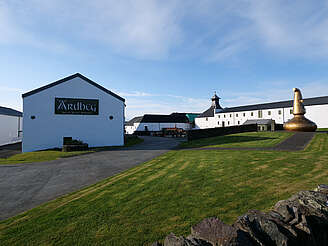
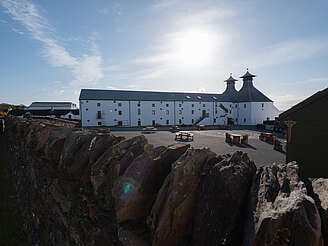
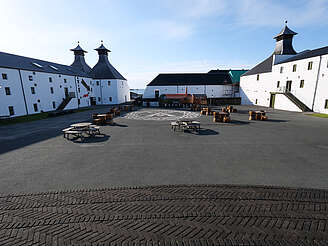
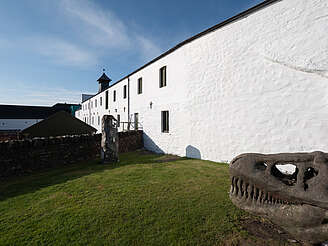
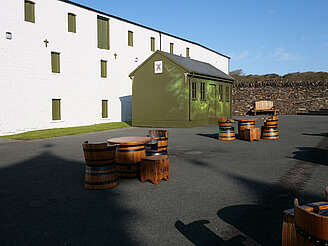
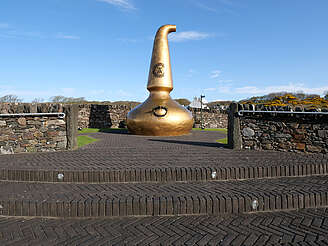
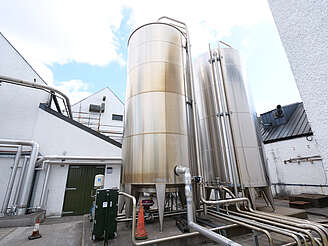
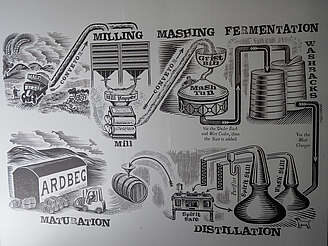
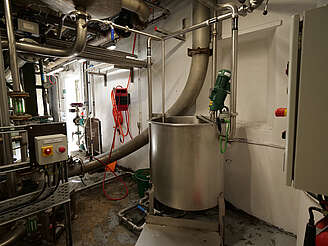
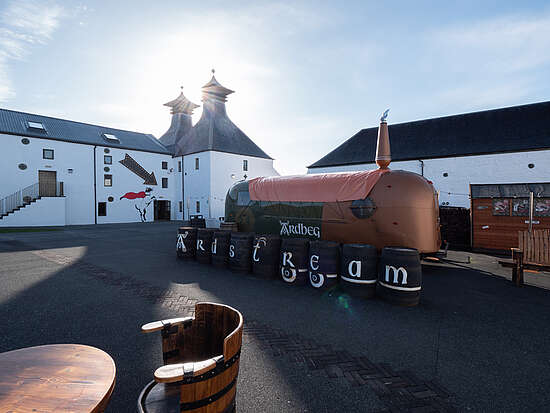
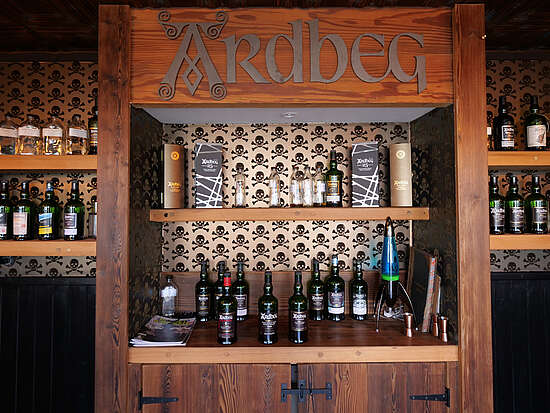
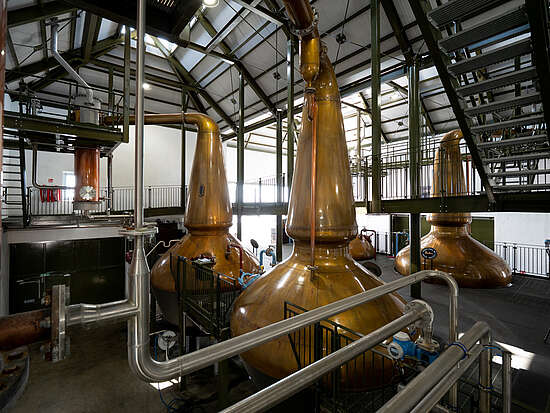
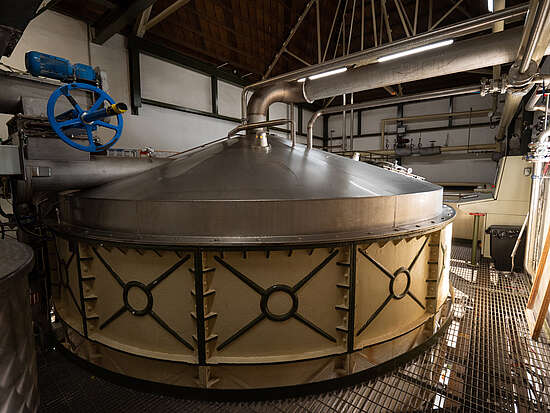
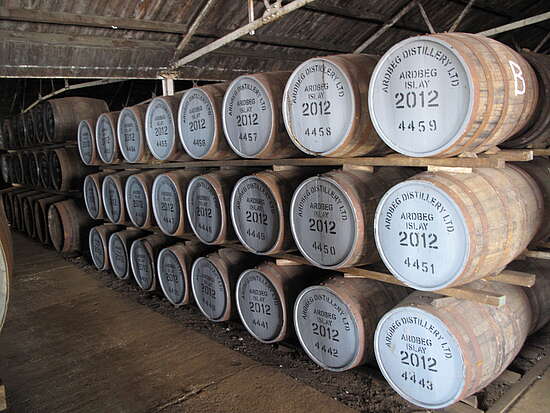
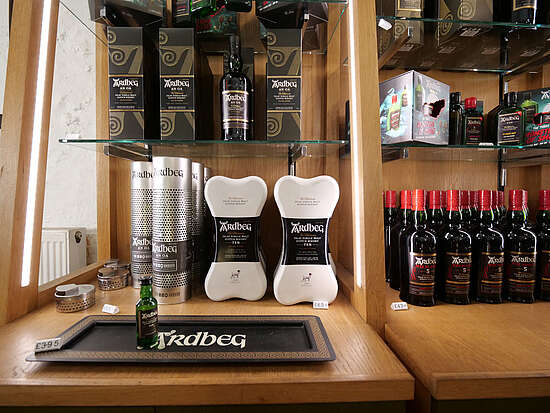























User Notes about the Distillery
Share your experience with other whisky lovers. Write a note about your trip to the Ardbeg distillery.